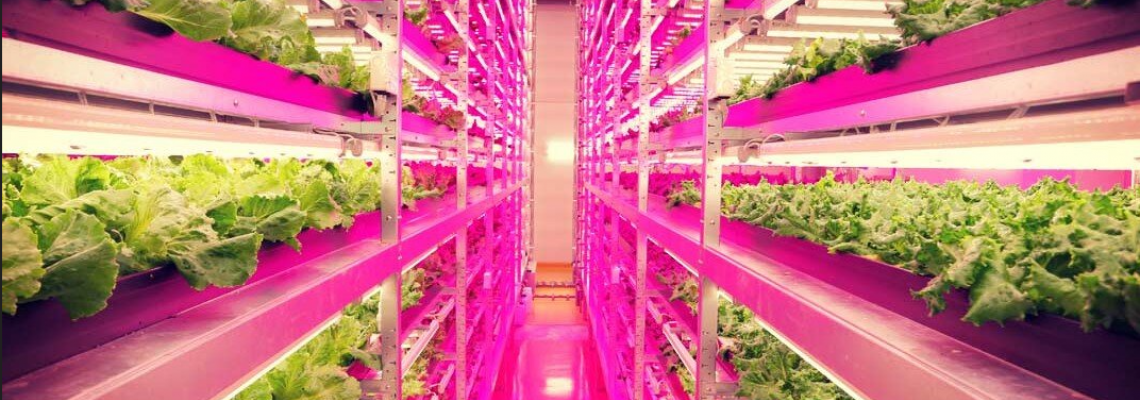
Hydroponics an innovative method of growing plants without soil has rapidly gained popularity due to its efficiency, space-saving design, and ability to produce crops year-round. As urban farming and indoor agriculture continue to expand, there's an increasing demand for dependable, energy-efficient lighting solutions that support healthy plant growth. Among the many lighting options available, full-spectrum LED grow lights have stood out as a transformative technology in the hydroponics world.
These LEDs are designed to closely replicate natural sunlight by emitting a wide range of light wavelengths, essential for all stages of plant growth from germination to flowering. Unlike traditional grow lights, full-spectrum LEDs are not only energy-efficient but also produce less heat, reducing the risk of damaging plants and lowering cooling costs.
As more growers shift toward sustainable and controlled-environment agriculture, full-spectrum LEDs are proving to be a critical component. They promote better yields, healthier plants, and reduced energy consumption making them ideal for both small-scale hobbyists and large-scale commercial farms. In this article, we’ll dive deeper into how full-spectrum LED lights are changing the face of hydroponics and why they represent the future of modern, eco-friendly farming.
What Are Full Spectrum LEDs?
Full-spectrum LEDs are lighting systems designed to emit light across the entire visible spectrum, closely replicating the natural sunlight that plants use during photosynthesis. Unlike traditional grow lights (such as fluorescent or high-pressure sodium lamps), full-spectrum LEDs provide a balanced blend of red, blue, green, and even far-red light wavelengths.
This full range of light is crucial because different wavelengths support various stages of plant growth:
Blue light (400–500 nm) promotes vegetative growth.
Red light (600–700 nm) enhances flowering and fruiting.
Far-red and UV light can influence plant morphology and stress responses.
By offering the complete light spectrum, these LEDs ensure plants receive the right type of light at every growth stage.
Key Advantages of Full Spectrum LEDs in Hydroponics
1. Mimics Natural Sunlight
One of the most significant benefits of full-spectrum LEDs is their ability to closely imitate natural sunlight. This ensures healthy photosynthesis, proper nutrient absorption, and balanced plant development—all of which are crucial in a soil-less environment like hydroponics.
2. Energy Efficiency
Compared to traditional lighting solutions, full-spectrum LEDs consume significantly less power. They convert more energy into usable light and less into heat, reducing electricity bills for commercial operations. Over time, this leads to substantial savings without compromising plant health.
3. Low Heat Output
LEDs emit far less heat than conventional grow lights. This is vital for hydroponic systems, where temperature control is critical. Lower heat levels reduce the risk of plant damage, minimize the need for additional cooling systems, and maintain optimal growing conditions.
4. Customizable Light Cycles
Many full-spectrum LED systems allow growers to adjust light intensity and wavelength combinations based on the plant’s growth stage. This flexibility results in higher yields, faster growth, and healthier plants.
5. Better Plant Health and Yield
Balanced light encourages strong root development, sturdy stems, larger leaves, and improved flowering. With the right spectrum, plants grow faster and produce higher yields. This is especially important in commercial hydroponics, where crop quality directly affects profit margins.
6. Long Lifespan and Durability
LED grow lights can last up to 50,000 hours or more, outlasting most traditional bulbs. Their durability and long life make them a smart investment for both hobbyists and commercial growers.
How Full Spectrum LEDs Support Sustainable Agriculture
As concerns about climate change, food security, and land scarcity grow, sustainable farming solutions are more important than ever. Full spectrum LEDs support eco-friendly agriculture in several ways:
Reduced Carbon Footprint: Lower energy consumption means fewer greenhouse gas emissions.
Water Conservation: In hydroponics, water is recirculated. Pairing this with efficient lighting minimizes resource use.
Urban Farming: Compact LED systems make vertical and indoor farming more accessible in urban areas.
Minimal Waste: The long lifespan of LEDs reduces electronic waste and maintenance costs.
These advantages position full-spectrum LEDs as a key component in the future of environmentally responsible food production.
Full Spectrum LEDs vs. Traditional Grow Lights
Best Practices for Using Full Spectrum LEDs in Hydroponics
To maximize the benefits of full spectrum LED lighting in your hydroponic setup, follow these tips:
Adjust Light Height: Maintain the correct distance between the light and plants to avoid light burn or insufficient exposure.
Use Timers: Automate your light cycles to mimic natural day and night periods.
Match Light Spectrum to Growth Stage: Tailor the spectrum and intensity based on whether your plants are in the vegetative or flowering phase.
Keep Lights Clean: Dust and debris can block light and reduce efficiency—clean regularly.
Combine with Reflective Surfaces: Use reflective materials around your grow space to maximize light distribution.
Applications Across Crops and Growers
Whether you’re a small-scale hobbyist or a large commercial grower, full-spectrum LEDs offer scalable solutions. They're ideal for growing:
Leafy greens (lettuce, spinach, kale)
Herbs (basil, cilantro, mint)
Tomatoes and peppers
Strawberries
Microgreens
Their versatility also makes them suitable for schools, research labs, and urban farming initiatives aiming to grow fresh produce locally and sustainably.
The Future Is Bright for LED-Powered Hydroponics
As the demand for sustainable and efficient food production grows, hydroponics paired with full-spectrum LED lighting is becoming the go-to solution. With their energy efficiency, customizability, and ability to foster optimal plant growth, full-spectrum LEDs are not just a trend—they're the future.
Investing in this technology means healthier plants, reduced environmental impact, and a smarter approach to feeding the world.
Conclusion
Full spectrum LEDs are more than just advanced grow lights—they’re a driving force behind the evolution of modern agriculture. For hydroponic growers, they offer the ideal balance of performance, sustainability, and cost-efficiency. Whether you’re starting your first indoor garden or expanding a commercial operation, switching to full-spectrum LEDs could be the brightest decision you make.

2 Comment(s)
1
1
1
1
1
Leave a Comment